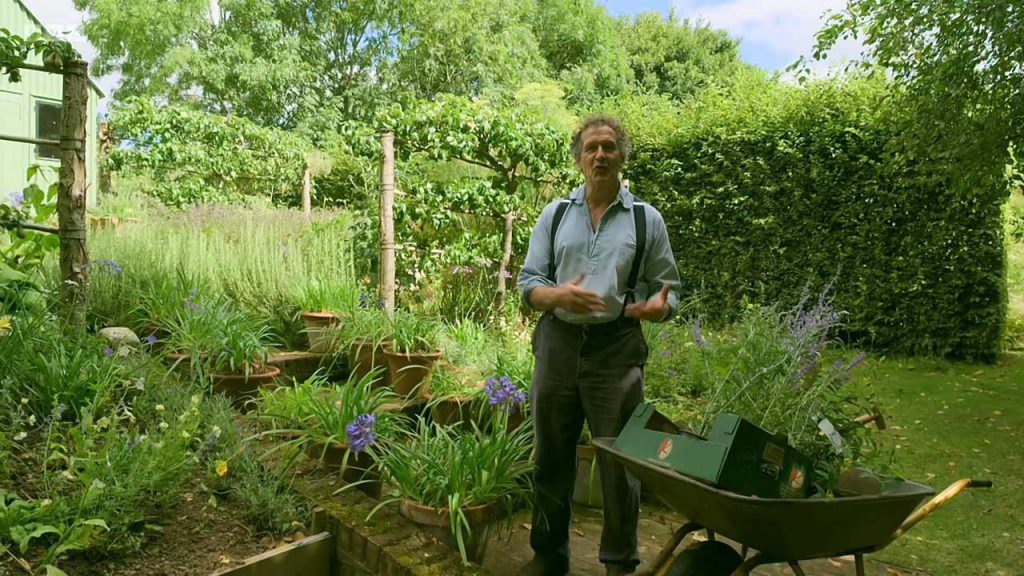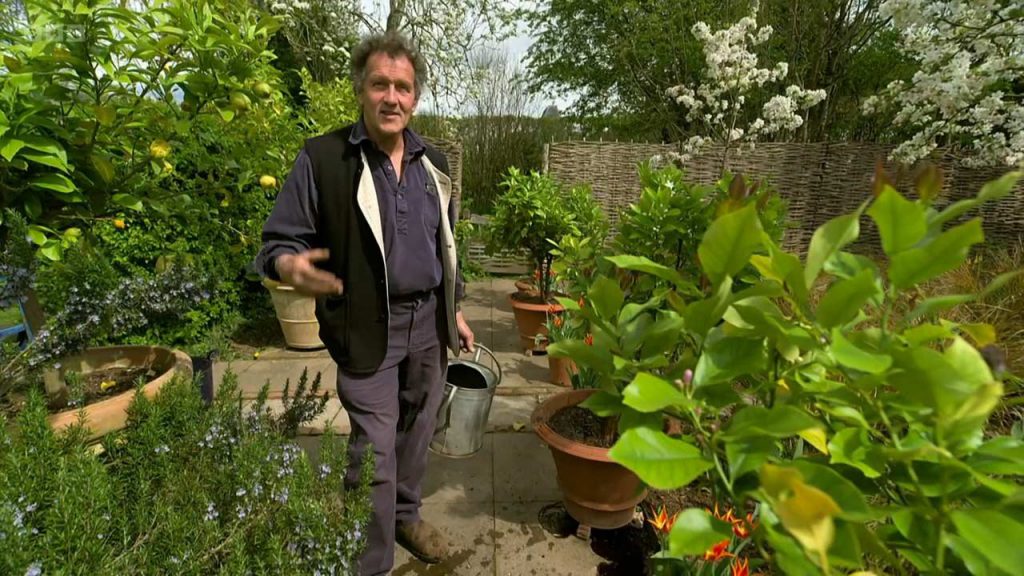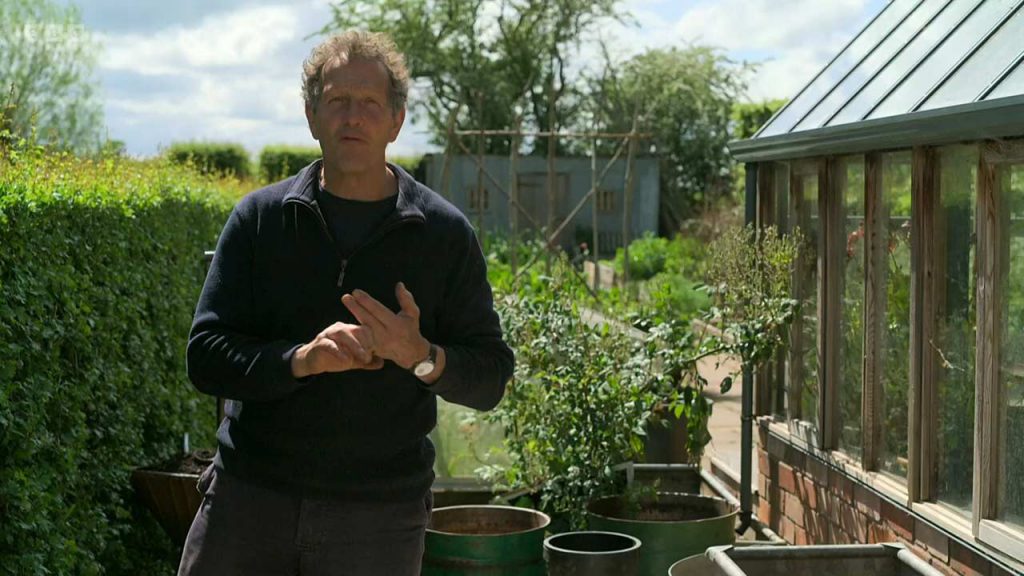Gardeners World 2023 – Compilations episode 2: Monty Don plants tender annuals for high summer colour, as well as sharing his tips for growing cherries and pruning blackcurrants. Arit Anderson discovers a paradise garden in Cambridge that has become a focal point for the local community. Adam Frost heads to a beautiful walled garden in West Sussex that is both ornamental and productive, and Frances Tophill meets an enthusiast in Devon who grows a huge variety of perennial veg.
Also, how one gardener transformed the alleyway behind his house into a relaxing space full of plants, as well as a grower from Suffolk sharing her obsession with tomatoes. There’s also another look at some viewers’ films from their own gardens.
Gardeners’ World is a long-running British gardening programme that started on 5 January 1968. It was described as “a weekly series for gardeners, advanced and beginners, throughout the British Isles”. It picked up where its forerunner – Gardening Club – left off, and also featured that programme’s much loved presenter, the knowledgeable and down-to-earth Percy Thrower. The programme covers various aspects of gardening, such as plants, wildlife, design, techniques, tips and advice. It also features visits to gardens around the country and interviews with experts and enthusiasts.
The current main presenter is Monty Don, who hosts the show from his own garden in Herefordshire. He is joined by other regular presenters such as Carol Klein, Adam Frost, Arit Anderson, Frances Tophill and Nick Bailey. Gardeners’ World is a popular and influential programme that celebrates the joy of gardening and inspires people to create beautiful and productive gardens of their own.
Gardeners World 2023 – Compilations episode 2
How to grow dahlias
With showy blooms in a range of colours, sizes and shapes, dahlias light up sunny borders through summer and into late autumn. They suit most garden styles, from tropical to cottage borders, and smaller types can be grown in containers. As dahlia aren’t hardy, they need protection over winter. Dahlias are beautiful flowering plants that come in a wide range of colors and sizes. They are a popular choice for gardeners because of their stunning blooms that last from mid-summer to the first frost. Here are some tips on how to grow dahlias:
- Choose the right location: Dahlias need plenty of sunlight, at least 6 hours per day, and well-drained soil. Choose a location that gets plenty of sun and has soil that drains well.
- Plant at the right time: Dahlias are sensitive to frost, so plant them after the last frost has passed. This is typically in the spring, around late April or early May, depending on your location.
- Prepare the soil: Dahlias need fertile soil, so add compost or well-rotted manure to the soil before planting. This will help improve the soil’s nutrients and structure.
- Plant the tubers: Dig a hole that is 6-8 inches deep and place the dahlia tuber in it with the eye facing up. Cover the tuber with soil and water it thoroughly.
- Water regularly: Dahlias need regular watering, especially during hot, dry weather. Water them deeply once or twice a week, rather than frequent shallow watering.
- Fertilize: Dahlias benefit from regular fertilization, especially when they start to produce buds. Use a balanced fertilizer every 4-6 weeks throughout the growing season.
- Support the plants: Dahlias can grow quite tall, so they may need support as they grow. You can use stakes or cages to support the plants.
- Deadhead the blooms: To encourage more blooms, remove the spent flowers regularly.
- Winter storage: After the first frost, dig up the dahlia tubers, brush off the soil, and store them in a cool, dry place for the winter.
Following these tips can help you grow healthy, beautiful dahlias in your garden.
Vegetables in containers
Planting vegetables in containers is a versatile way of growing edible crops in the garden, particularly where space is limited. Growing vegetables in containers is a great way to enjoy fresh produce, even if you don’t have a lot of outdoor space. Here are some tips for growing vegetables in containers:
- Choose the right container: Choose a container that is large enough to accommodate the vegetable you want to grow. The container should also have drainage holes at the bottom to allow excess water to drain out.
- Select the right soil: Use a high-quality potting mix that is specifically designed for container gardening. This type of soil is lightweight and well-draining, which will help prevent waterlogged roots.
- Choose the right vegetables: Not all vegetables are suitable for container gardening. Look for varieties that have a compact growth habit and don’t require a lot of space. Some great options include cherry tomatoes, lettuce, peppers, cucumbers, and herbs like basil and parsley.
- Provide enough sunlight: Most vegetables need at least 6-8 hours of sunlight per day. Place your container in a spot that gets plenty of sunlight.
- Water regularly: Container gardens dry out faster than traditional gardens, so you’ll need to water your vegetables regularly. Water deeply when the soil feels dry to the touch.
- Fertilize: Use a slow-release fertilizer or add compost to the soil to provide your plants with the nutrients they need to thrive.
- Consider trellising or staking: Some vegetables, like tomatoes and cucumbers, may require support as they grow. Consider using a trellis or stakes to support these plants and prevent them from falling over.
- Rotate your crops: To prevent soil-borne diseases, it’s a good idea to rotate your crops each season. This means planting a different vegetable in the same container the following year.
By following these tips, you can grow a successful container vegetable garden and enjoy fresh, homegrown produce all season long.
Blackcurrants – Gardeners’ World 2023 – Compilations episode 2
Blackcurrants are a delicious and nutritious fruit that can be grown in many climates. Here are some tips on how to grow and care for blackcurrants:
- Planting: Blackcurrants can be planted in the fall or early spring. Choose a location that receives partial to full sunlight and has well-draining soil. Dig a hole that is slightly larger than the root ball and plant the blackcurrant at the same depth it was growing in its container. Space plants about 5 feet apart.
- Watering: Blackcurrants require regular watering, especially during dry periods. Water deeply once a week and mulch around the base of the plant to help retain moisture.
- Fertilizing: Blackcurrants benefit from annual fertilization. Apply a balanced fertilizer in early spring before new growth appears.
- Pruning: Blackcurrants require pruning to maintain their shape and promote healthy growth. Prune in late winter or early spring before new growth begins. Remove any damaged or diseased wood, as well as any wood older than 3 years.
- Harvesting: Blackcurrants are typically ready for harvest in mid-summer. Harvest the fruit when it is fully ripe and dark in color. Use scissors or pruners to cut the fruit from the stem.
- Pest and disease control: Blackcurrants are susceptible to several pests and diseases, including aphids, mites, and powdery mildew. Monitor your plants regularly and use appropriate pest and disease control measures if necessary.
- Winter care: Blackcurrants are hardy plants, but they may require some winter protection in colder climates. Mulch around the base of the plant to help insulate the roots and protect the plant from freezing temperatures.
By following these tips, you can grow healthy and productive blackcurrant bushes in your garden.




